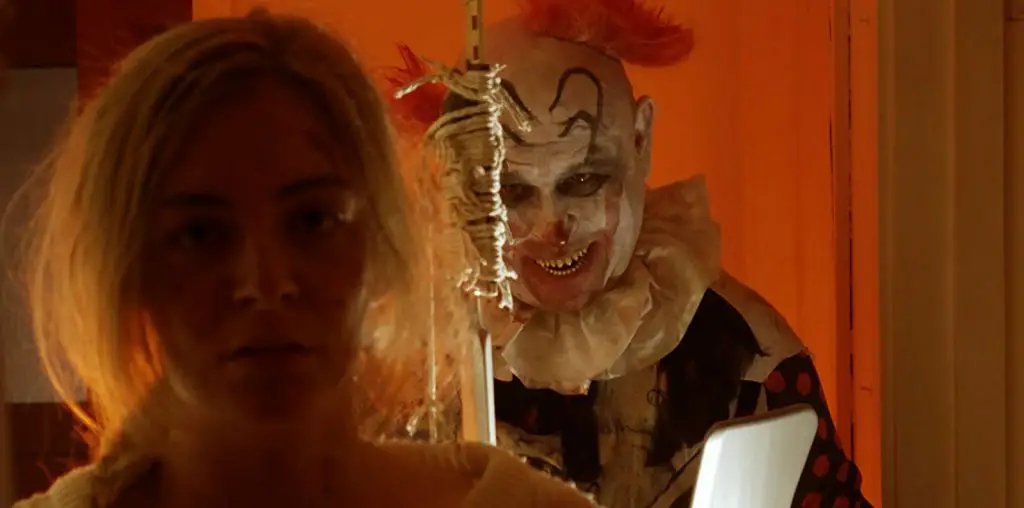
In Ed Rankus’ absorbing video, “The Elektra/Vampyr Variations,” Dana Marks reads through the score of Strauss’ opera “Elektra” while wearing boxing gloves. She sings fragments of the score to a still camera on a tripod. Wearing rubber yellow gloves, she tries repeatedly to scrub scum off of a shower stall. Meanwhile, Anoo Brod, dressed as a gypsy woman, hangs stills from Dreyer’s film “Vampyr” on a clothesline while telling scary vampire tales. She drops handfuls of black dirt into a wooden drawer. Later, Elektra searches through this dirt for the ax her mother used to murder her father. Marjorie Hazeltine, dressed as a soldier, could either be her father Agamemnon or her brother Orestes.
Like many of Rankus’ films, this one is structured as a set of visual/verbal/musical variations on a small set of themes. Visual elements such as the dirt, the murder weapon, theater curtains, the boxing gloves, and vampire wings are used repeatedly, always in different arrangements, as an integral part of the action. In a sequence where the gypsy is a photographer, goading Elektra to act out her murderous rage for a photo shoot, Rankus implies that the eye of the artist is like a vampire, greedily lapping up the rage and emotional intensity of the characters in her work. (Of course, one could say that the audience is even more of a vampire in this respect.)
In an intertitle, Rankus explicitly makes the connection that the ongoing chain of murderous rage in “Elektra” (where the father’s murder of his daughter leads to the mother’s murder of him, which leads to Elektra’s murder of her) is like the vampire story.
Through the deft, inventive use of these elements, along with the Strauss music and imagery from the Dreyer film, Rankus uses the form of “variations” to examine his theme of “a chain of murderous rage” from multiple angles. With each new vignette, expertly composed, using a constantly surprising mix of repeated and new formal elements, we feel that we are peering deeper into the mysterious heart of this (finally unexplainable) emotional storm. The cool and detached manner in which the performers (and the filmmaker) move from one murderous image to the next creates a wonderful tension between the methodical, almost mathematical structure of the work and the utterly irrational subject matter. Ed Rankus uses artistry and craft to help us contemplate the mysteries of human passion, and turns hideous emotions into a gorgeous work of art.
